cross_ Replace validation with model_ Selection is OK
Tag Archives: ProgrammerAH
How to Debug ‘The System cannot Execute the specified program’ message.
How to Debug ‘The System cannot Execute the specified program’ message. 









Here is another unofficial preview of a topic that I am going to send out to our UE team later today for publishing on MSDN. As always, standard disclosure that this post is provided “AS IS” with no warranties, and confer no rights and use of this sample is subject to the terms specified at http://www.microsoft.com/info/cpyright.htm Please feel free to send me any feedback (other the grammar and spelling errors :-)).
Loading C/C++ application may fail if dependent Visual C++ libraries can not be found. In this section the most common reasons for a C/C++ application failing to load are described with proposed steps to resolve the problems.
One of the most common errors messages one may see when dependent Visual C++ DLLs cannot be found is a message box with a text saying “ The system cannot executed the specified program”. Below several things are listed that may help to understand a reason for this error.
- Dependency walker can show most of dependencies for any particular application or Dll. If you see some of DLLs are missing, please insure that these DLLs are correctly installed on the computer on which you are trying to run your application. Manifest is used by the operating system loader to load assemblies that your applications depend on. It can be either embedded inside the binary as a resource or saved as an external file in the application’s local folder. To check whether manifest is embedded inside the binary, open your binary in Visual Studio and browse through resources of this binary. You should be able to find a resource with name RT_MANIFEST. If you cannot find manifest embedded inside the binary, check for external file named something like <binary_name>.<extension>.manifest.
- If manifest is not present, you need to ensure that the linker generates manifest for your project. You need to check linker’s option “Generate manifest” in Project Properties dialog for this project.
Note: It is not supported to build VC++ projects without manifest generation. All C/C++ program built in Visual C++ 2005 have to include a manifest describing its dependencies on Visual C++ libraries.
- If manifest is embedded inside the binary, ensure that ID of RT_MANIFEST is correct for this type of the binary. Such for applications ID should be equal to 1, for most DLLs ID should be equal to 2. If you found this file export it as a file and open in a XML or just a text editor. For more information on manifest and rules for its deployment, see Manifest. Please be aware that on Windows XP, if an external manifest is present in the application’s local folder, the operating system loader uses this manifest over a manifest embedded inside the binary. On Windows Server 2003, this works vice versa – external manifest is ignored and embedded manifest is used when present. It is recommended for all DLLs to have a manifest embedded inside the binary. External manifest are ignore when DLL is loaded thought LoadLibrary() call. For information see, Assemblies manifest. Check all assemblies enumerated in the manifest for their correct installation of the computer. Each assembly specified in the manifest by its name, version number and processor architecture. If your application depends on side-by-side assemblies, check that these assemblies are installed on this computer properly, so they can be found by the operating system loader that uses steps specified in Searching sequence while searching for dependent assemblies. Remember that 64bit assemblies cannot be loaded in 32bit process and cannot be executed on 32bit operating system.
Example:
Let’s assume we have an application appl.exe built with Visual C++ 2005. This application may have its manifest either embedded inside appl.exe as a binary resource RT_MANIFEST with ID equal to 1, or store as an external file appl.exe.manifest. The content of a manifest may be something like below:
<assembly xmlns=”urn:schemas-microsoft-com:asm.v1″ manifestVersion=”1.0″>
<dependency>
<dependentAssembly>
<assemblyIdentity type=”win32″ name=”Microsoft.VC80.CRT” version=”8.0.50215.4631″ processorArchitecture=”x86″ publicKeyToken=”1fc8b3b9a1e18e3b”></assemblyIdentity>
</dependentAssembly>
</dependency>
</assembly>
To the operating system loader this manifest says that appl.exe depends on an assembly named Microsoft.VC80.CRT, version 8.0.50215.4631 and built for 32bit x86 processor architecture.
The dependent side-by-side assembly can be installed as either shared assembly or as private assembly. For example, Visual Studio 2005 installs CRT assembly as a shared side-by-side assembly and it can be found in the directory
C:\WINDOWS\WinSxS\x86_Microsoft.VC80.CRT_1fc8b3b9a1e18e3b_8.0.50215.4631_x-ww_b7acac55 (assuming C:\Windows is the operating system’s root directory).
The assembly manifest for a shared Visual C++ CRT assembly is also installed in
C:\WINDOWS\WinSxS\Manifests\x86_microsoft.vc80.crt_1fc8b3b9a1e18e3b_8.0.50215.4631_x-ww_b7acac55.manifest
And it identifies this assembly and lists its content (DLLs that are part of this assembly):
<?xml version=”1.0″ encoding=”UTF-8″ standalone=”yes”?>
<!– Copyright ┬⌐ 1981-2001 Microsoft Corporation –>
<assembly xmlns=”urn:schemas-microsoft-com:asm.v1″ manifestVersion=”1.0″>
<noInheritable/>
<assemblyIdentity type=”win32″ name=”Microsoft.VC80.CRT” version=”8.0.50215.4631″ processorArchitecture=”x86″ publicKeyToken=”1fc8b3b9a1e18e3b”/>
<file name=”msvcr80.dll” hash=”3ca5156e8212449db6c622c3d10f37d9adb12c66″ hashalg=”SHA1″/>
<file name=”msvcp80.dll” hash=”92cf8a9bb066aea821d324ca4695c69e55b27cff” hashalg=”SHA1″/>
<file name=”msvcm80.dll” hash=”7daa93e1195940502491c987ff372190bf199395″ hashalg=”SHA1″/>
</assembly>
Side-by-side assemblies can also use publisher configuration files, also called policy files, to globally redirect applications and assemblies from using one version of a side-by-side assembly to another version of the same assembly. You can check policies for shared Visual C++ CRT assembly in
C:\WINDOWS\WinSxS\Policies\x86_policy.8.0.Microsoft.VC80.CRT_1fc8b3b9a1e18e3b_x-ww_77c24773\8.0.50215.4631.policy
which content is something like
</assembly>
<?xml version=”1.0″ encoding=”UTF-8″ standalone=”yes”?>
<!– Copyright ┬⌐ 1981-2001 Microsoft Corporation –>
<assembly xmlns=”urn:schemas-microsoft-com:asm.v1″ manifestVersion=”1.0″>
<assemblyIdentity type=”win32-policy” name=”policy.8.0.Microsoft.VC80.CRT” version=”8.0.50215.4631″ processorArchitecture=”x86″ publicKeyToken=”1fc8b3b9a1e18e3b”/>
<dependency>
<dependentAssembly>
<assemblyIdentity type=”win32″ name=”Microsoft.VC80.CRT” processorArchitecture=”x86″ publicKeyToken=”1fc8b3b9a1e18e3b”/>
<bindingRedirect oldVersion=”8.0.41204.256″ newVersion=”8.0.50215.4631″/>
</dependentAssembly>
</dependency>
</assembly>
The policy above basically specifies that any application or assembly that asks for version 8.0.41204.256 of this assembly should use version 8.0.50215.4631 of this assembly, which is the current version installed on the system. If a version of the assembly mentioned in the applications manifest is specified in the policy file, the loader looks for a version of this assembly specified in the manifest in the WinSxS folder, and if this version is not installed load fails. And if assembly of version 8.0.50215.4631 is not installed also, load fails for applications that ask for assembly of version 8.0.41204.256.
However CRT assembly can also be installed as a private side-by-side assembly in the applications local folder. If the operating system fails to find CRT or any other assembly as a shared assembly, it starts looking for this assembly as a private assembly. It searches for private assemblies in the following order:
1. Check the application local folder for a manifest file with name <assemblyName>.manifest. In this example, the loader tries to find Microsoft.VC80.CRT.manifest file in the same folder as appl.exe.
a. If the manifest has been found, the loader loads CRT Dll from the application folder.
b. If CRT DLL is not found, load fails.
2. Try to open folder <assemblyName> in appl.exe local folder and if it exists, load manifest file <assemblyName>.manifest from this folder.
a. If the manifest has been found, the loader loads CRT DLL from <assemblyName> folder.
b. If CRT DLL is not found, load fails.
See Assembly Searching Sequence for more detailed description on how loader searches for dependent assemblies. If the loader fails to find dependent assembly as a private assembly, load fails and “The system cannot executed the specified program” is display. To resolve this message dependent assemblies and DLLs that are part of them has to be installed on this computer as either private or shared assemblies.
Related Sections
About Isolated Applications and Side-by-side Assemblies
Assembly Searching Sequence
Manifest
Publisher configuration files
Rendering Problems :Failed to load platform rendering library
The Internet said that this problem occurred because the API version was too high, and it was OK to lower the version
the original setting was 28, but it couldn’t be adjusted to 27 or 26, so it was OK to adjust 23 24 25 to 23,
when it was adjusted to 24, it was wrong: the Internet said that because Android version 24 was null.
java.lang.NoClassDefFoundError: com/android/util/PropertiesMap
at com.android.layoutlib.bridge.android.BridgeContext.createStyleBasedTypedArray(BridgeContext.java:940)
at com.android.layoutlib.bridge.android.BridgeContext.obtainStyledAttributes(BridgeContext.java:638)
at android.content.res.Resources_Theme_Delegate.obtainStyledAttributes(Resources_Theme_Delegate.java:71)
at android.content.res.Resources$Theme.obtainStyledAttributes(Resources.java:1436)
at android.widget.TextView.<init>(TextView.java:761)
at android.widget.TextView.<init>(TextView.java:704)
at android.widget.TextView.<init>(TextView.java:700)
at com.android.layoutlib.bridge.MockView.<init>(MockView.java:50)
at com.android.layoutlib.bridge.MockView.<init>(MockView.java:45)
at com.android.layoutlib.bridge.MockView.<init>(MockView.java:41)
at android.view.BridgeInflater.createViewFromTag(BridgeInflater.java:163)
at android.view.LayoutInflater.createViewFromTag(LayoutInflater.java:727)
at android.view.LayoutInflater.rInflate_Original(LayoutInflater.java:858)
at android.view.LayoutInflater_Delegate.rInflate(LayoutInflater_Delegate.java:70)
at android.view.LayoutInflater.rInflate(LayoutInflater.java:834)
at android.view.LayoutInflater.inflate(LayoutInflater.java:492)
at com.android.layoutlib.bridge.bars.CustomBar.<init>(CustomBar.java:95)
at com.android.layoutlib.bridge.bars.StatusBar.<init>(StatusBar.java:67)
at com.android.layoutlib.bridge.impl.Layout.createStatusBar(Layout.java:223)
at com.android.layoutlib.bridge.impl.Layout.<init>(Layout.java:145)
at com.android.layoutlib.bridge.impl.RenderSessionImpl.inflate(RenderSessionImpl.java:300)
at com.android.layoutlib.bridge.Bridge.createSession(Bridge.java:429)
at com.android.ide.common.rendering.LayoutLibrary.createSession(LayoutLibrary.java:350)
at com.android.tools.idea.rendering.RenderTask$2.compute(RenderTask.java:510)
at com.android.tools.idea.rendering.RenderTask$2.compute(RenderTask.java:498)
at com.intellij.openapi.application.impl.ApplicationImpl.runReadAction(ApplicationImpl.java:967)
at com.android.tools.idea.rendering.RenderTask.createRenderSession(RenderTask.java:498)
at com.android.tools.idea.rendering.RenderTask.access$600(RenderTask.java:72)
at com.android.tools.idea.rendering.RenderTask$3.call(RenderTask.java:610)
at com.android.tools.idea.rendering.RenderTask$3.call(RenderTask.java:607)
at com.android.tools.idea.rendering.RenderService.runRenderAction(RenderService.java:359)
at com.android.tools.idea.rendering.RenderTask.render(RenderTask.java:607)
at com.android.tools.idea.rendering.RenderTask.render(RenderTask.java:629)
at com.intellij.android.designer.designSurface.AndroidDesignerEditorPanel$7.run(AndroidDesignerEditorPanel.java:519)
at com.intellij.util.ui.update.MergingUpdateQueue.execute(MergingUpdateQueue.java:337)
at com.intellij.util.ui.update.MergingUpdateQueue.execute(MergingUpdateQueue.java:327)
at com.intellij.util.ui.update.MergingUpdateQueue$3.run(MergingUpdateQueue.java:271)
at com.intellij.util.ui.update.MergingUpdateQueue.flush(MergingUpdateQueue.java:286)
at com.intellij.util.ui.update.MergingUpdateQueue.flush(MergingUpdateQueue.java:244)
at com.intellij.util.ui.update.MergingUpdateQueue.run(MergingUpdateQueue.java:234)
at com.intellij.util.concurrency.QueueProcessor.runSafely(QueueProcessor.java:238)
at com.intellij.util.Alarm$Request$1.run(Alarm.java:352)
at java.util.concurrent.Executors$RunnableAdapter.call(Executors.java:511)
at java.util.concurrent.FutureTask.run(FutureTask.java:266)
at java.util.concurrent.ThreadPoolExecutor.runWorker(ThreadPoolExecutor.java:1142)
at java.util.concurrent.ThreadPoolExecutor$Worker.run(ThreadPoolExecutor.java:617)
at java.lang.Thread.run(Thread.java:748)
All the calls to 25, 26, 27 and 28 are errors of failed to load platform rendering library.
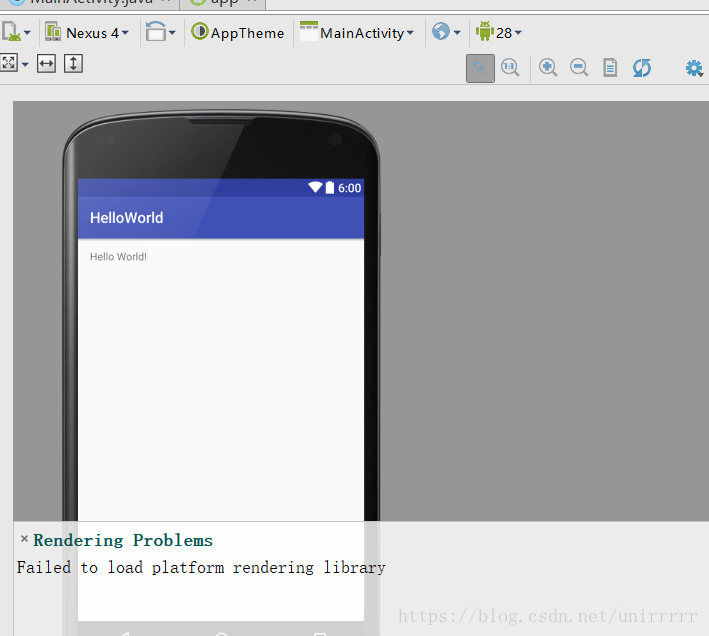
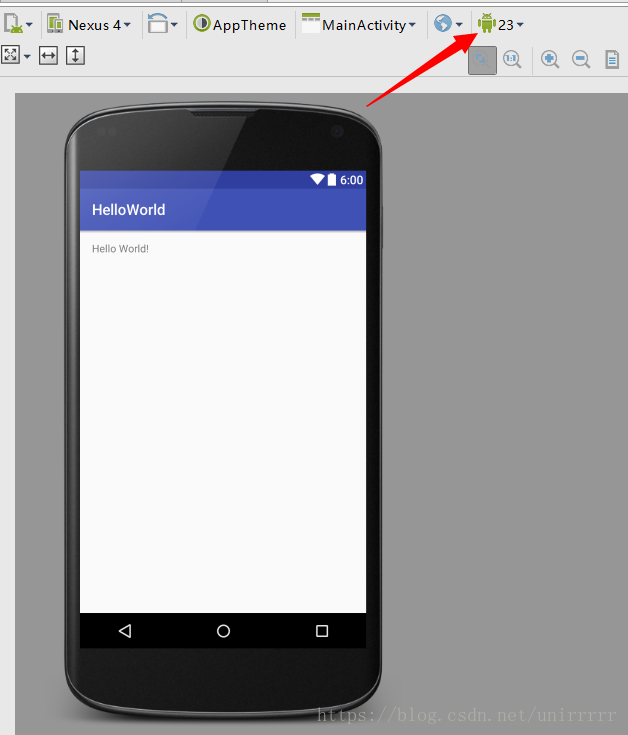
Failure [DELETE_ FAILED_ INTERNAL_ After [error], RM APK is unloaded
Use ADB install today com.xx.xx Uninstall a software
Result error: failure [delete]_ FAILED_ INTERNAL_ Error]
in the end, there is no way to install a kingroot and unload it through kingroot…
Now we know:
first of all: ADB shell PM list packages – s finds the package name to be deleted
the address to get the package name: ADB shell PM path com.xx.xx
Mount system read / write permission: ADB remount
delete package: ADB shell RM / system / APP / olddriver/ OldDriver.apk
Finally, the ADB reboot is OK
Delete all data related to package, clear data and cache: ADB shell PM clear & lt; package & gt;
Output the APK path of the installation package: ADB shell PM path & lt; package & gt;
Original text: https://blog.csdn.net/sunfellow2009/article/details/78435925
copyright notice: This article is the original article of the blogger, please attach the blog link if you want to reprint it!
MSDN I tell you new site next I tell you open invitation code registration! Today’s quota is 5000!
Provide reliable original software
Twelve years of concentration and accumulation, the original intention has not changed, to create the next milestone.
* not everyone can accept and use the original software. Please fully understand your own needs.
* only provide the access method and use guidance of the original software, and do not provide the key and genuine authorization.
The new version of the website is more suitable for novices https://next.itellyou.cn Invitation code: itellyou666, today’s limit is 5000.
The solution of push D command execution error (/ bin / sh: 1: push D: not found) on Ubuntu
The solution of push D command execution error (/ bin / sh: 1: push D: not found) on Ubuntu
View reason: enter the / bin directory to view the link file of SH, which is shown as follows: the SH command is linked to dash, while the pushd command needs to be executed in the bash environment.
Solution: execute the sudo dpkg reconfigure dash command and set the dash to No.
Check again: the link to check SH has been changed to bash.
Code::Blocks 12.11 error: ‘nullptr’ was not declared in this scope&GNU GCC -std=gnu++0x
Code::Blocks 12.11 error: ‘nullptr’ was not declared in this scope&GNU GCC -std=gnu++0x
Aleeee’s blog
C + + primer English Version (Fifth Edition) P54 null points chapter: Modern C + + programs should generally use null and use nullptr instead. So we use code:: blocks to type the code, and the problem comes.
error: ‘nullptr’ was not declared in this scope
So Google answers on the Internet, a lot of English, and finally probably understand that it’s the GNU gcc compiler problem, not the IDE problem of code:: blocks. You just need to type the command line – STD = GNU + + 0x in the compiler. Solution: Code:: blocks integrates GNU gcc compiler, so menu bar – & gt; setting – & gt; compiler , select the global compiler settings page, select GNU gcc compiler at the top of the page, select compiler settings – & gt; compiler flags at the middle of the page, and check have G + + follow the coming C + + 0x ISO C + + language standard [- STD = GNU + + 0x]
Well, the next compilation will be successful! O(∩_ ∩)O~
Failed to execute goal org.codehaus.mojo:exec-maven-plugin:3.0.0:exec (default-cli) on project Hello
HBase only adds a sentence, and the following error will appear when running
failed to execute goal org.codehaus.mojo :exec-maven- plugin:3.0.0 :exec (default-cli) on project HelloSpring: Command execution failed.
Solution: in pom.xml Add in
<build>
<finalName>HelloSpring</finalName>
<pluginManagement><!-- lock down plugins versions to avoid using Maven defaults (may be moved to parent pom) -->
<plugins>
<!-- clean lifecycle, see https://maven.apache.org/ref/current/maven-core/lifecycles.html#clean_Lifecycle -->
<plugin>
<artifactId>maven-clean-plugin</artifactId>
<version>3.1.0</version>
</plugin>
<!-- default lifecycle, jar packaging: see https://maven.apache.org/ref/current/maven-core/default-bindings.html#Plugin_bindings_for_jar_packaging -->
<plugin>
<artifactId>maven-resources-plugin</artifactId>
<version>3.0.2</version>
</plugin>
<plugin>
<artifactId>maven-compiler-plugin</artifactId>
<version>3.8.0</version>
</plugin>
<plugin>
<artifactId>maven-surefire-plugin</artifactId>
<version>2.22.1</version>
</plugin>
<plugin>
<artifactId>maven-jar-plugin</artifactId>
<version>3.0.2</version>
</plugin>
<plugin>
<artifactId>maven-install-plugin</artifactId>
<version>2.5.2</version>
</plugin>
<plugin>
<artifactId>maven-deploy-plugin</artifactId>
<version>2.8.2</version>
</plugin>
<!-- site lifecycle, see https://maven.apache.org/ref/current/maven-core/lifecycles.html#site_Lifecycle -->
<plugin>
<artifactId>maven-site-plugin</artifactId>
<version>3.7.1</version>
</plugin>
<plugin>
<artifactId>maven-project-info-reports-plugin</artifactId>
<version>3.0.0</version>
</plugin>
</plugins>
</pluginManagement>
</build>
Or as follows:
<build>
<finalName>HelloSpring</finalName>
<pluginManagement><!-- lock down plugins versions to avoid using Maven defaults (may be moved to parent pom) -->
<plugins>
<plugin>
<groupId>org.codehaus.mojo</groupId>
<artifactId>exec-maven-plugin</artifactId>
<version>1.3</version>
<executions>
<execution>
<goals>
<goal>java</goal>
</goals>
</execution>
</executions>
<configuration>
<mainClass>org.company.Main</mainClass>
</configuration>
</plugin>
</plugins>
</pluginManagement>
</build>
The third method: I tried it myself, but I didn’t report this exception
that is, I deleted all the things in the warehouse and re imported them
The second operation of software engineering
The second operation of software engineering
8.5 The department of public works for a large city has decided to develop a Web-based pothole tracking and repair system(PHTRS). Draw a UML use case diagram for the PHTRS system. You’ll have to make a number ofassumptions about the manner in which a user interacts with this system. A description follows:
Citizens can log onto a website and report the location and severity of potholes. As potholes are reported they are logged with a “public works department repair system” and are assigned an identifying number, stored by street address, size(on a scale of 1 to 10), location(middle, curb, etc.),district(determined from street address), and repair priority(determined from the size of the pothole). Work order data are associated with each pothole and include pothole location and size, repair crew identifying number, number of people on crew, equipment assigned, hours applied to repair, hole status(work in progress, repaired, temporary repair, not repaired), amount of filler material used, and cost of repair (computed from hours applied, number of people, material and equipment used). Finally, a damage file is created to hold information about reported damage due to the pothole and includes citizen’s name, address, phone number, type of damage, and dollar amount of damage, PHTRS is an online system; all queries a to be made interactively.
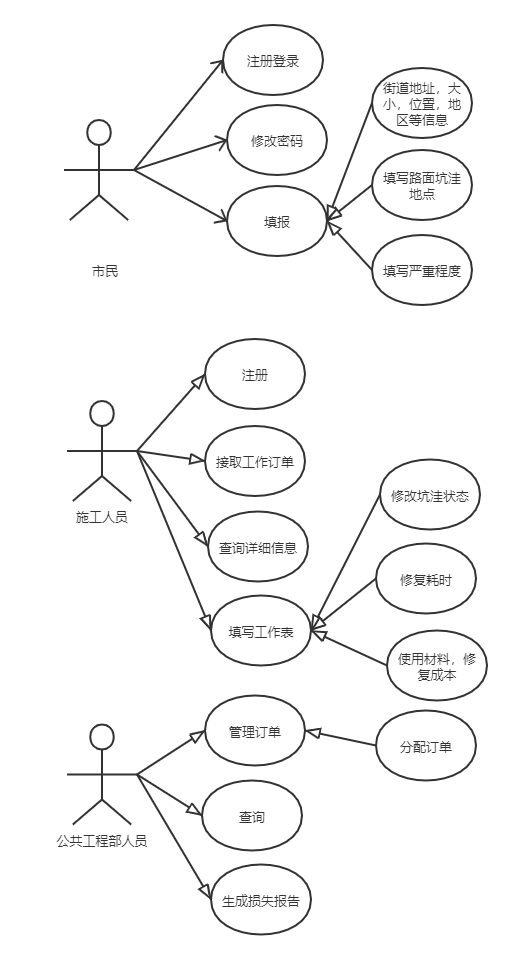
1. UML use case
8.6 Write two or three use cases that describe the roles of various actors in the PHTRS .
Case 1: filling situation
Participants: Citizens
- when citizens log in to phtrs, they input their account number, and they input two passwords (each at least 8 characters in length). The system displays all the main function buttons. Citizens select “fill in” from the main functions. Citizens fill in the street address, size, location, region, and repair priority. Citizens choose to save. The system assigns an identification number for the fill in and generates an order to be sent to the public works department Staff
Case 2: fill in the worksheet
Participants: construction workers
- when the construction personnel log in phtrs, the construction personnel input the account number, the construction personnel input two passwords (each with a length of at least 8 characters), the system displays all the main function buttons, the construction personnel select “fill in the worksheet” from the main functions, the system displays the work order assigned by the construction personnel, the construction personnel select the corresponding work order, the construction personnel fill in the number of personnel, and the allocated equipment, Repair time, pothole state, filling materials, repair cost and other information submitted by construction personnel
8.7 Develop an activity diagram for one aspect of PHTRS.
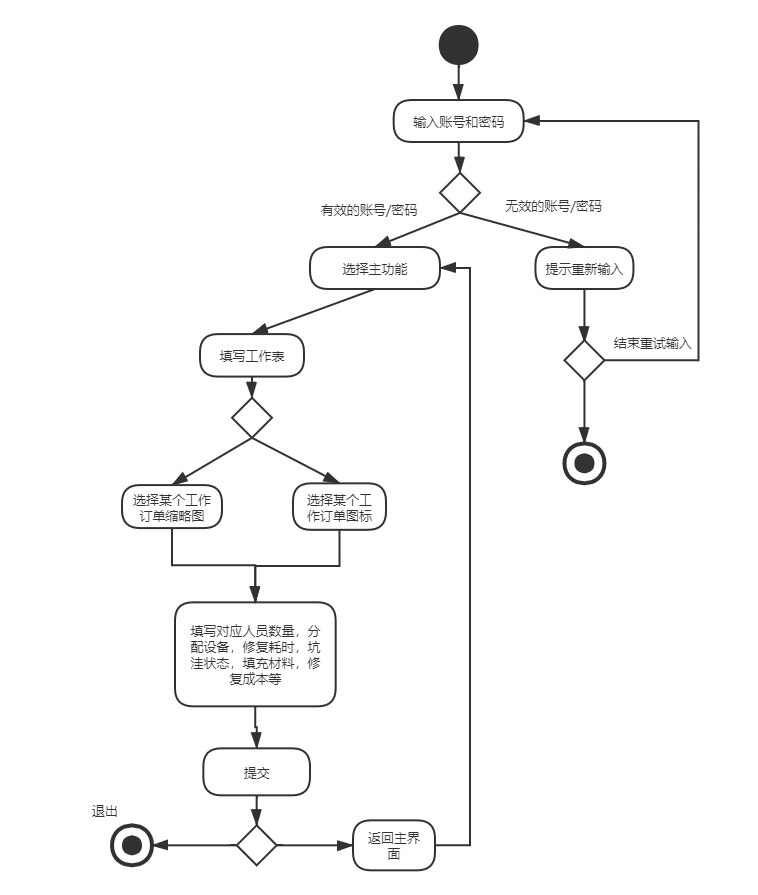
2. The activity chart of the construction personnel filling in the work sheet
8.8 Develop a swimlane diagram for one or more aspects of PHTRS.
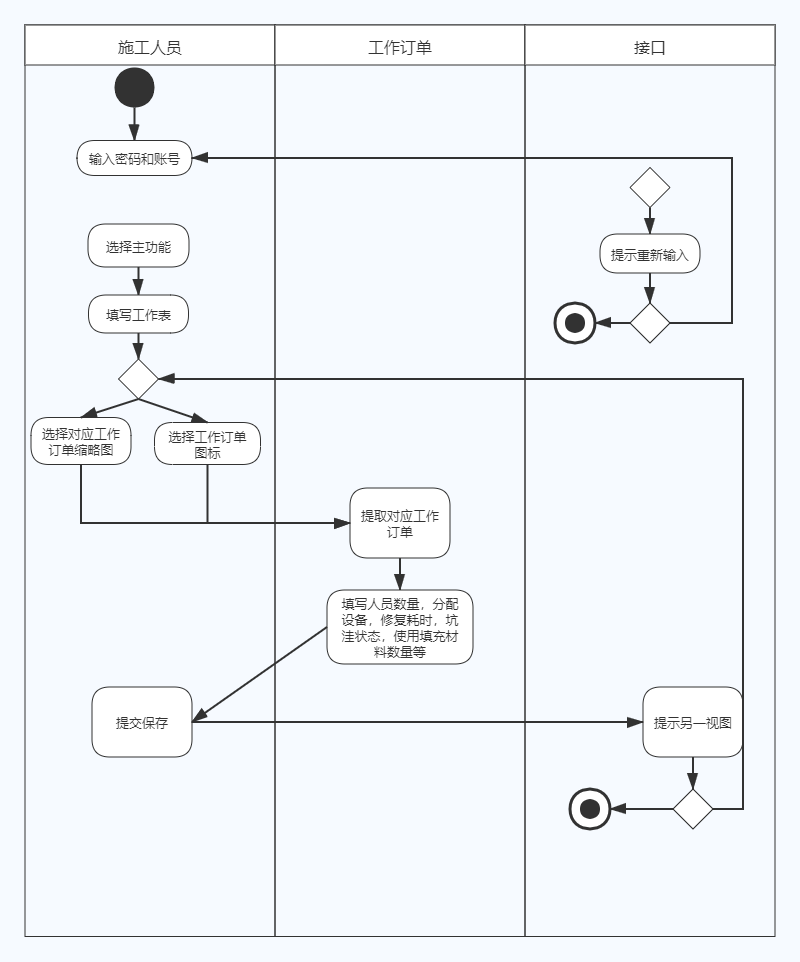
3. The construction personnel fill in the swimlane chart of the work sheet
Unicode decodeerror: ‘UTF-8’ codec can’t decode byte 0x80 in position 3131: invalid start byte solution
The Unicode decodeerror: ‘UTF-8’ codec can’t decode byte 0x80 in position 3131: invalid start byte appears in the process of using Python 3 to read files on Mac OS.
The reason is: OS X system has hidden file. DS in the folder_ Store file, affecting the file read.
.DS_ Store is a hidden file that stores the custom properties of a folder on Mac OS, such as its icon location or background color.
The solution is: use the command line to enter the folder where the file is read and delete. DS_ Store file.
1. Use the command LS – A to view. DS_ Store file
2. rm .DS_ Store。
Error analysis of receive comments before first target. Stop
Error analysis of receive comments before first target. Stop
Today, make an example of using the make file, install the operation and write the file. This error occurred using ‘make – F makefile1’.
recipe commences before first target. Stop
The content of makefile1 is also very simple
[tab]3.o: 3.c b.h c.h
[tab][tab]gcc -c 3.c
Later, it was found that the [tab] in the first line needed to be deleted, and the command passed.
3.o: 3.c b.h c.h
[tab][tab]gcc -c 3.c
There is a very regrettable syntax phenomenon in makefile: there is a difference between control and tab. The line of the rule must start with a tab, not a space.
variable ‘std:ofstream’ has initializer but incomplete type
The reason is that the header file fstream was not added.
Add the
#include<fstream>